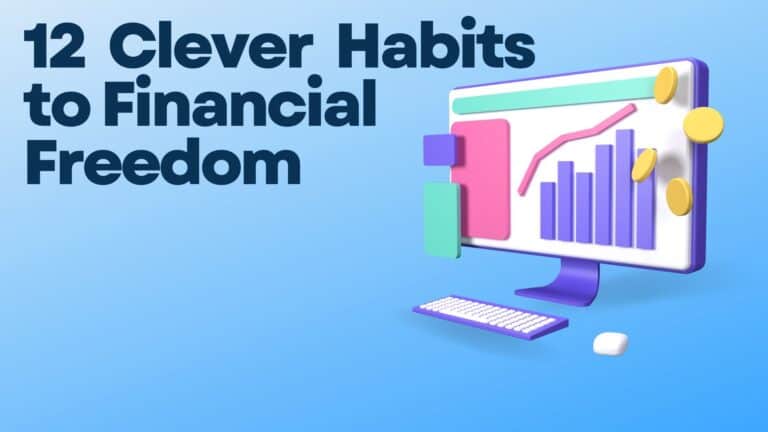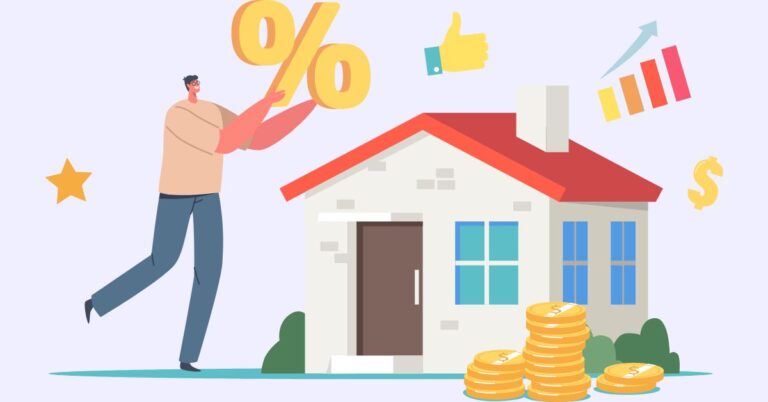A Comprehensive Map to True Wealth and Independence with F.R.E.E.D.O.M
Are you ready to break free from financial stress and build a life of true wealth and independence? The journey to financial freedom may seem daunting. But with the right roadmap, it’s within your reach. Welcome to the F.R.E.E.D.O.M framework – your guide to mastering your finances and achieving lasting prosperity.
Financial freedom isn’t just about having a hefty bank account; it’s about creating a life where money works for you, not the other way around. It’s about having the flexibility to make choices based on your values, not just your financial obligations.
The F.R.E.E.D.O.M framework offers a comprehensive approach to building wealth, combining practical strategies with a powerful mindset shift.
In this post, we’ll dive deep into each component of F.R.E.E.D.O.M, providing you with actionable insights and strategies to transform your financial life. Whether you’re just starting your financial journey or looking to take your wealth to the next level, this roadmap will guide you toward true financial independence.
What is the F.R.E.E.D.O.M Framework
What is F.R.E.E.D.O.M? F.R.E.E.D.O.M is more than just a catchy acronym – it’s a holistic approach to financial mastery.
Each letter represents a crucial element in your journey to wealth and independence:
F: Flexibility – “Embrace financial agility. This category explores how to create adaptable income streams, diversify your skills, and build a financial foundation that can withstand economic shifts. Learn to pivot your strategies and seize opportunities in any market condition.”
R: Resourcefulness – “Maximize every asset at your disposal. Discover innovative ways to leverage your existing resources, from optimizing your living space to monetizing your hobbies. We’ll show you how to think creatively about wealth creation and preservation.”
E: Education – “Knowledge is your greatest investment. This section is dedicated to continuous learning in personal finance, economics, and wealth-building strategies. Stay ahead of the curve with cutting-edge financial concepts and timeless wealth principles.”
E: Efficiency – “Streamline your path to wealth. Learn to optimize your time, energy, and financial processes. We’ll explore automation tools, productivity hacks, and decision-making frameworks that accelerate your journey to financial freedom.”
D: Discipline – “Master the art of financial self-control. Develop the habits and mindset necessary for long-term wealth accumulation. From managing impulse spending to maintaining investment strategies during market volatility, discipline is your key to sustained success.”
O: Opportunities – “Cultivate your ability to recognize and capitalize on financial opportunities. Learn to spot emerging trends, undervalued assets, and hidden potential in various markets. Develop the confidence to act on well-researched opportunities.”
M: Mindset – “Transform your relationship with money. Explore the psychology of wealth, overcome limiting beliefs, and develop a prosperity-focused mindset. Learn how your thoughts and attitudes shape your financial reality.”
By mastering these seven components, you’ll build a robust financial foundation that can weather any storm and propel you toward your goals.
Financial Flexibility
Financial flexibility is your safety net and your springboard. It’s the ability to adapt to changing circumstances without derailing your financial progress. Building flexibility into your finances means creating multiple income streams, maintaining a robust emergency fund, and structuring your investments to allow for both stability and growth. To increase your financial flexibility:
- Aim for 3-6 months of living expenses in an easily accessible emergency fund.
- Diversify your income sources – consider freelancing, investing in dividend-paying stocks, or starting a side business.
- Keep a portion of your investment portfolio in liquid assets that can be quickly converted to cash if needed.
Remember, flexibility isn’t just about having cash on hand – it’s about creating options for yourself. As Warren Buffett wisely said, “The most important investment you can make is in yourself.
“Actionable Tip: Start building your financial flexibility today by automating a small weekly transfer to your emergency fund. Even $20 a week can add up to over $1,000 in a year!

Practicing Resourcefulness
Financial resourcefulness is about making the most of what you have and finding creative solutions to financial challenges. It’s the ability to stretch your dollars further, find hidden opportunities, and turn obstacles into stepping stones. To cultivate financial resourcefulness:
Embrace a frugal mindset – look for ways to reduce expenses without sacrificing quality of life.
- Learn basic DIY skills to save on home and car maintenance.
- Explore bartering or skill-sharing within your community.
- Use technology to your advantage – compare prices, find deals, and automate your savings.
“The art is not in making money, but in keeping it.” This old proverb encapsulates the essence of resourcefulness. It’s not just about earning more, but about maximizing the value of every dollar you have.
Practical Exercise: Conduct a “Resource Audit” of your life. List all your skills, assets, and connections. How can you leverage these to improve your financial situation or create new income streams? Education: Continuous financial education is the cornerstone of wealth-building. The financial world is constantly evolving, and staying informed is crucial to making smart decisions with your money. To enhance your financial education:
- Read at least one personal finance book per quarter.
- Follow reputable financial blogs and podcasts.
- Consider taking online courses on investing, budgeting, or specific financial topics that interest you.
- Join a local investment club or attend financial seminars.
“An investment in knowledge pays the best interest,” said Benjamin Franklin, and this is especially true in finance. The more you learn, the better equipped you’ll be to grow and protect your wealth. Challenge: Commit to a specific financial learning goal for the next month. Whether it’s understanding a new investment vehicle or mastering budgeting techniques, set a clear objective and timeline for your learning.
Keys to Financial Efficiency
Financial efficiency is about optimizing your financial processes to get the most value from your money and time. It involves streamlining your budget, minimizing waste, and ensuring that every dollar is working hard towards your goals. To improve your financial efficiency:
- Use budgeting apps to track your spending and identify areas for improvement.
- Automate your bill payments and savings contributions.
- Regularly review and optimize your recurring expenses.
- Consolidate your accounts to simplify management and reduce fees.
- Here’s a step-by-step guide for conducting a personal financial audit:
- Gather all financial statements (bank, credit cards, investments, loans).
- List all income sources and expenses.
- Analyze your spending patterns and identify areas of waste.
- Set specific goals for reducing expenses and increasing savings.
- Create a plan to reallocate funds to high-priority financial goals.
- Schedule regular check-ins to track progress and make adjustments.

If There Was a Race Discipline Wins
Financial discipline is the bridge between your goals and your achievements. It’s about making consistent, sometimes difficult choices that align with your long-term financial objectives. To develop strong financial discipline:
- Set clear, measurable financial goals.
- Create a realistic budget and stick to it.
- Practice delayed gratification – evaluate purchases based on long-term value, not short-term satisfaction.
- Regularly review your progress and adjust your strategies as needed.
“The price of discipline is always less than the pain of regret.” This quote reminds us that while financial discipline may be challenging, the rewards far outweigh the temporary discomfort.
Template for a Personal Financial Discipline Plan
My top 3 financial goals for the next year are:
- a. Save $5,000 for an emergency fund
- b. Pay off $3,000 in credit card debt
- c. Increase retirement contributions by 2% of my salary
To achieve these goals, I commit to:
- a. Automatically transfer $200 to my emergency savings account each payday
- b. Cut dining out expenses by 50% and apply the savings to credit card debt
- c. Reduce monthly streaming subscriptions and put the difference into my 401(k)
I will track my progress by:
- Using a budgeting app to monitor my spending and savings weekly. I’ll also check my credit card and retirement account statements monthly to ensure I’m on track with debt repayment and increased contributions.
- I will review and adjust my plan every 3 months.
My accountability partner/method is:
I’ve asked my best friend to be my accountability partner. We’ll have a monthly call to discuss our progress and challenges. I’ve also set calendar reminders for weekly self-check-ins.
Additional Tips:
- Be specific with your goals and actions
- Make your goals challenging but achievable
- Break larger goals into smaller, manageable steps
- Celebrate small victories along the way
- Be prepared to adjust your plan as circumstances change
Spotting Opportunties
Opportunities Recognizing and capitalizing on financial opportunities can accelerate your journey to wealth and independence. This involves staying alert to potential avenues for growth, whether in your career, investments, or personal ventures. To seize financial opportunities:
- Stay informed about trends in your industry and the broader economy.
- Network actively – opportunities often come through personal connections.
- Maintain an emergency fund that can also serve as an “opportunity fund.”
- Develop a system for evaluating potential opportunities quickly and effectively.
When evaluating financial opportunities, consider:
- Alignment with your goals and values
- Potential return on investment (ROI)
- Level of risk involved
- Required time and resource commitment
- Long-term sustainability and growth potential
Remember, not every opportunity is right for everyone. The key is to find opportunities that align with your unique skills, interests, and financial situation.

The Foundation is Mindset
Your mindset is the foundation of your financial success. A positive, growth-oriented mindset can help you overcome obstacles, stay motivated, and make better financial decisions. To cultivate a wealth-building mindset:
- Practice gratitude for your current financial situation, no matter where you are.
- Visualize your financial goals regularly.
- Surround yourself with positive, financially savvy individuals.
- Reframe setbacks as learning opportunities.
“Whether you think you can, or you think you can’t – you’re right.” This quote from Henry Ford underscores the power of mindset in achieving our goals. Mindset Exercise: Each morning, repeat these affirmations:
- “I am capable of creating lasting wealth and financial freedom.”
- “I make smart, informed decisions about my money.”
- “I am constantly learning and growing in my financial knowledge.”
- “I attract abundance and opportunities into my life.”
- “I am in control of my financial destiny.”
Putting It All Together
The F.R.E.E.D.O.M framework is most powerful when all components work in harmony. Imagine Sarah, a marketing professional who decides to take control of her finances:
Flexibility: Sarah builds a 6-month emergency fund and starts a side gig in freelance writing.
Resourcefulness: She negotiates a better rate on her bills and sells unused items online.
Education: Sarah commits to reading one financial book per month and attends a local investing workshop.
Efficiency: She automates her savings and uses a budgeting app to track expenses.
Discipline: Sarah creates a debt repayment plan and sticks to it, avoiding unnecessary purchases.
Opportunities: Through networking, Sarah lands a higher-paying job and invests the extra income.
Mindset: She practices daily affirmations and visualizes her debt-free, financially independent future.
By consistently applying these principles, Sarah transforms her financial life, paying off debt, building wealth, and creating the freedom to pursue her passions.
Action Plan to Implement F.R.E.E.D.O.M
- Assess your current financial situation.
- Set clear, measurable financial goals.
- Create a budget that incorporates all F.R.E.E.D.O.M principles.
- Establish an emergency/opportunity fund.
- Commit to a regular financial education routine.
- Implement systems to increase your financial efficiency.
- Develop a personal financial discipline plan.
- Stay alert to opportunities and evaluate them carefully.
- Practice mindset exercises daily.
- Review and adjust your plan monthly.
Conclusion
The path to financial freedom is a journey, not a destination. By embracing the F.R.E.E.D.O.M framework, you’re equipping yourself with the tools and mindset needed to navigate this journey successfully. Remember, true wealth isn’t just about money – it’s about creating a life of options, security, and fulfillment. Your financial freedom is within reach.
Start applying these principles today, and watch as your financial life transforms. The road may not always be easy, but with F.R.E.E.D.O.M as your guide, you’ll have the resilience and strategies to overcome any obstacle.
Take the first step now. Choose one aspect of F.R.E.E.D.O.M to focus on this week and commit to taking action. Your future self will thank you for the financial freedom you’re creating today.
FAQ:
Q: How long does it take to achieve financial freedom?
A: The timeline varies for each individual, depending on factors like current financial situation, income, and goals. Consistently applying the F.R.E.E.D.O.M principles can significantly accelerate your progress.
Q: Do I need a lot of money to start implementing the F.R.E.E.D.O.M framework?
A: No, you can start applying these principles regardless of your current financial situation. Many aspects, like education and mindset, don’t require any monetary investment.
Q: How can I stay motivated on my journey to financial freedom?
A: Set small, achievable goals along the way, celebrate your progress, and regularly visualize your end goal. Surrounding yourself with like-minded individuals can also help maintain motivation.
Q: Is it ever too late to start working towards financial freedom?
A: It’s never too late to improve your financial situation. While starting earlier provides more time for compound growth, the principles of F.R.E.E.D.O.M can be beneficial at any age or stage of life.
Q: How can I balance enjoying life now with saving for the future?
A: The key is finding a sustainable balance. Budget for both current enjoyment and future goals. The Flexibility and Efficiency components of F.R.E.E.D.O.M can help you optimize your resources to achieve both.
Author Bio:
Garnet is actively working to achieve financial freedom. As the author of and founder of WealthSolo, Garnet Smith is passionate about empowering others to take control of their financial futures through education and actionable strategies.







